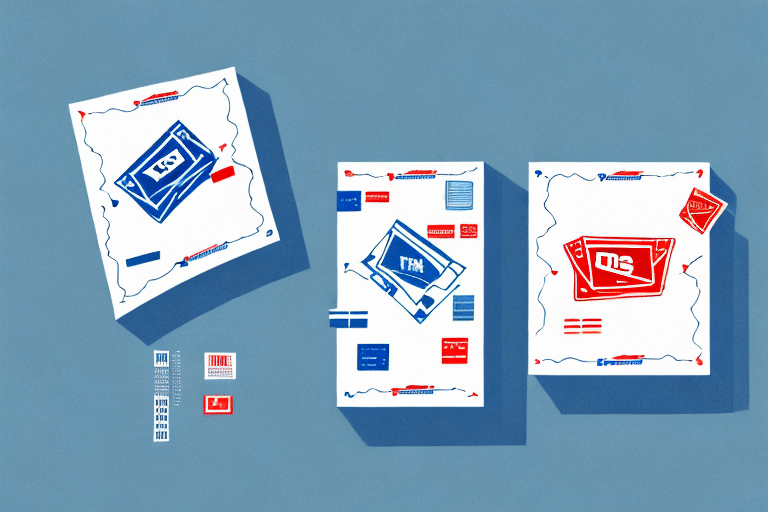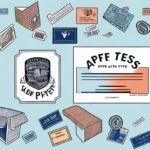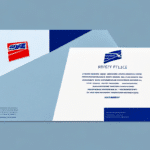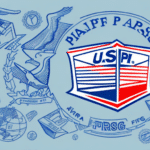Comparing USPS First Class Package and Priority Mail
Are you trying to decide between USPS First Class Package and Priority Mail service for your shipping needs? Understanding the differences between the two options can help you make an informed decision and choose the right shipping method for your requirements.
Understanding the Basics of USPS First Class Package and Priority Mail
USPS First Class Package is a cost-effective method of shipping lightweight packages weighing up to 15.99 ounces. It is the most affordable option available for sending packages, excluding Flat Rate Envelopes and Small Flat Rate Boxes.
Priority Mail is a faster but slightly more expensive shipping option for packages that weigh over a pound or require quicker delivery times. Priority Mail offers a variety of flat-rate packaging options and includes free delivery confirmation and insurance.
It is important to note that USPS First Class Package does not include free tracking or insurance, unlike Priority Mail. Additionally, Priority Mail offers a guaranteed delivery date, which is beneficial for time-sensitive packages. However, if you are shipping a lightweight package and cost is a major concern, USPS First Class Package may be the best option for you.
Which Shipping Method is Right for You: USPS First Class Package or Priority Mail?
Choosing between USPS First Class Package and Priority Mail requires evaluating your package's weight, size, and desired delivery speed. Consider the following factors:
- Weight and Size: If you're shipping a lightweight item and delivery time is not a primary concern, USPS First Class Package is ideal for saving money.
- Delivery Speed: If your package is over a pound or requires faster delivery times, Priority Mail may be a better choice, typically delivering within 1-3 business days.
- Additional Features: Priority Mail includes tracking, insurance, and free package pickup, which can save time and provide peace of mind.
For detailed USPS shipping options, visit the USPS official website.
Key Differences Between USPS First Class Package and Priority Mail
- Weight Limits:
- First Class Package: Up to 15.99 ounces
- Priority Mail: Over one pound with no upper weight limit for most services
- Shipping Speed:
- First Class Package: 2-5 business days
- Priority Mail: 1-3 business days
- Packaging Options:
- First Class Package: Limited to specific size and weight requirements
- Priority Mail: Offers flat-rate boxes and envelopes
- Cost:
- First Class Package: Starts at $2.74
- Priority Mail: Starts at $7.02
- Tracking and Insurance:
- First Class Package: Includes basic tracking
- Priority Mail: Includes tracking and $50 insurance
For more detailed comparisons, refer to the USPS Priority Mail information page.
USPS First Class Package vs Priority Mail: Which is Cheaper?
Generally, USPS First Class Package is the cheaper option for sending lightweight packages, with rates starting at $2.74. In contrast, Priority Mail rates start at $7.02 for packages of similar size and weight. However, Priority Mail offers additional features such as faster delivery, free insurance, and tracking, which may justify the higher cost depending on your needs.
Delivery Times:
- First Class Package: Up to 3 business days
- Priority Mail: 1-3 business days with a guaranteed delivery date
If you are sending a time-sensitive package or a higher-value item, the extra cost of Priority Mail may be worthwhile.
According to the USPS First Class Package Service details, selecting the right service can optimize both cost and delivery efficiency for your shipments.
How Fast is USPS First Class Package vs Priority Mail Delivery?
USPS First Class Package delivery times typically range from 2-5 business days, depending on the destination. On the other hand, Priority Mail offers faster delivery, usually within 1-3 business days.
However, it's important to note that delivery times can be affected by factors such as weather conditions, holidays, and unforeseen circumstances. Both services offer tracking, which allows you to monitor the progress and estimated delivery date of your package.
For real-time tracking updates, visit the USPS tracking page.
How to Determine if You Need to Use USPS First Class Package or Priority Mail
When deciding between USPS First Class Package and Priority Mail, consider the following factors:
- Package Weight and Size: First Class Package is suitable for items under 16 ounces, while Priority Mail handles larger and heavier packages.
- Delivery Speed: Use Priority Mail for faster delivery needs.
- Additional Features: Priority Mail offers free insurance and tracking, which are essential for valuable or important shipments.
- Destination: Priority Mail provides better coverage for remote or international locations.
For international shipments, consider Priority Mail International, which offers faster delivery and includes tracking and insurance.
Comparing Shipping Rates for USPS First Class Package and Priority Mail
When comparing rates:
- First Class Package: Rates are based on package weight and destination, making it more economical for lightweight items.
- Priority Mail: Rates are based on weight and shipping zone or distance. While more expensive, it offers faster delivery and additional services.
During peak seasons, such as holidays, Priority Mail may provide more reliable delivery times. Additionally, Priority Mail’s flat-rate options can be more cost-effective for heavier packages that fit within the flat-rate box dimensions.
For current USPS shipping rates, visit the USPS Postage Price Calculator.
Tips for Saving Money on Shipping Costs with USPS First Class Package vs Priority Mail
- Utilize Flat-Rate Shipping: Flat-rate options can be cost-effective for heavy items and include free insurance and tracking.
- Print Shipping Labels Online: Purchasing postage online can result in discounts compared to buying at the post office.
- Optimize Package Size and Weight: Choose the most economical shipping method by minimizing package size and weight.
- Bundle Shipments: If sending multiple items, consider consolidating them into a single shipment to save on costs.
- Research International Options: For international shipping, compare First Class International and Priority Mail International to find the most affordable and efficient option.
For more cost-saving strategies, refer to the USPS Priority Mail tips.
Pros and Cons of Using USPS First Class Package vs Priority Mail
- USPS First Class Package:
- Pros: Cost-effective for lightweight packages, simple service.
- Cons: Limited tracking, no included insurance, slower delivery times.
- Priority Mail:
- Pros: Faster delivery, includes tracking and insurance, free pickup, and flat-rate options.
- Cons: More expensive than First Class Package, especially for light items.
Evaluate your shipping needs and budget to determine which service aligns best with your requirements.
Understanding the Packaging Requirements for USPS First Class Package and Priority Mail
- USPS First Class Package:
- Maximum weight: 15.99 ounces
- Maximum size: 22 inches in length, with a combined girth and length no more than 36 inches
- Requires proper packaging to prevent damage during transit
- Priority Mail:
- No strict weight limit for most services
- Various packaging options including flat-rate boxes and envelopes
- Maximum package size: 108 inches combined length and girth
- USPS provides free boxes and envelopes for Priority Mail
For exact packaging guidelines, visit the USPS Packaging Guidelines.
Best Practices for Tracking Your Packages with USPS First Class Package and Priority Mail
Both USPS First Class Package and Priority Mail offer tracking services. To ensure accurate tracking:
- Use Clear Labels: Ensure that shipping labels are clear and securely attached to the package.
- Monitor Online: Use the USPS tracking tool or the USPS mobile app to monitor your package's progress.
- Sign Up for Notifications: Subscribe to email or text alerts for real-time updates on your package’s status.
Properly packaging and labeling your shipment helps prevent delays and ensures successful delivery.
Comparing Insurance Options for USPS First Class Package and Priority Mail
Priority Mail includes free insurance coverage up to $50 for most packages, providing protection against loss or damage during transit. Additional insurance can be purchased for higher-value items.
USPS First Class Package comes with basic tracking but does not include insurance. If you need insurance for a First Class Package, you must purchase it separately.
For valuable shipments, Priority Mail is recommended to ensure adequate coverage without additional costs.
Learn more about USPS insurance options on the USPS Insurance page.
How to Handle Returns with USPS First Class Package and Priority Mail
If you or your customers need to return a package sent via USPS First Class Package or Priority Mail, follow these steps:
- Use the Same Shipping Method: Returns should be shipped using the same service as the original delivery.
- Print a Return Label: You can print a USPS return label from the USPS Returns website or visit your local post office.
- Adjust Return Fees: Depending on your business policy, you may cover the return shipping costs or pass them to the customer.
Providing easy return options enhances customer satisfaction and trust.
Conclusion: Choosing the Right Shipping Method for Your Business or Personal Needs
Understanding the differences between USPS First Class Package and Priority Mail is essential for selecting the right shipping method for your business or personal needs. Consider the following factors:
- Package Weight and Size: Choose First Class for lighter items and Priority Mail for larger packages.
- Delivery Speed: Opt for Priority Mail when faster delivery is required.
- Insurance and Tracking: Priority Mail provides built-in tracking and insurance, offering added security.
- Cost Considerations: Balance your budget with the required features to determine the most cost-effective solution.
By evaluating these factors, you can ensure that your shipments are both cost-effective and meet your delivery expectations.
For more information on USPS shipping options, visit the USPS Shipping Services page.






















